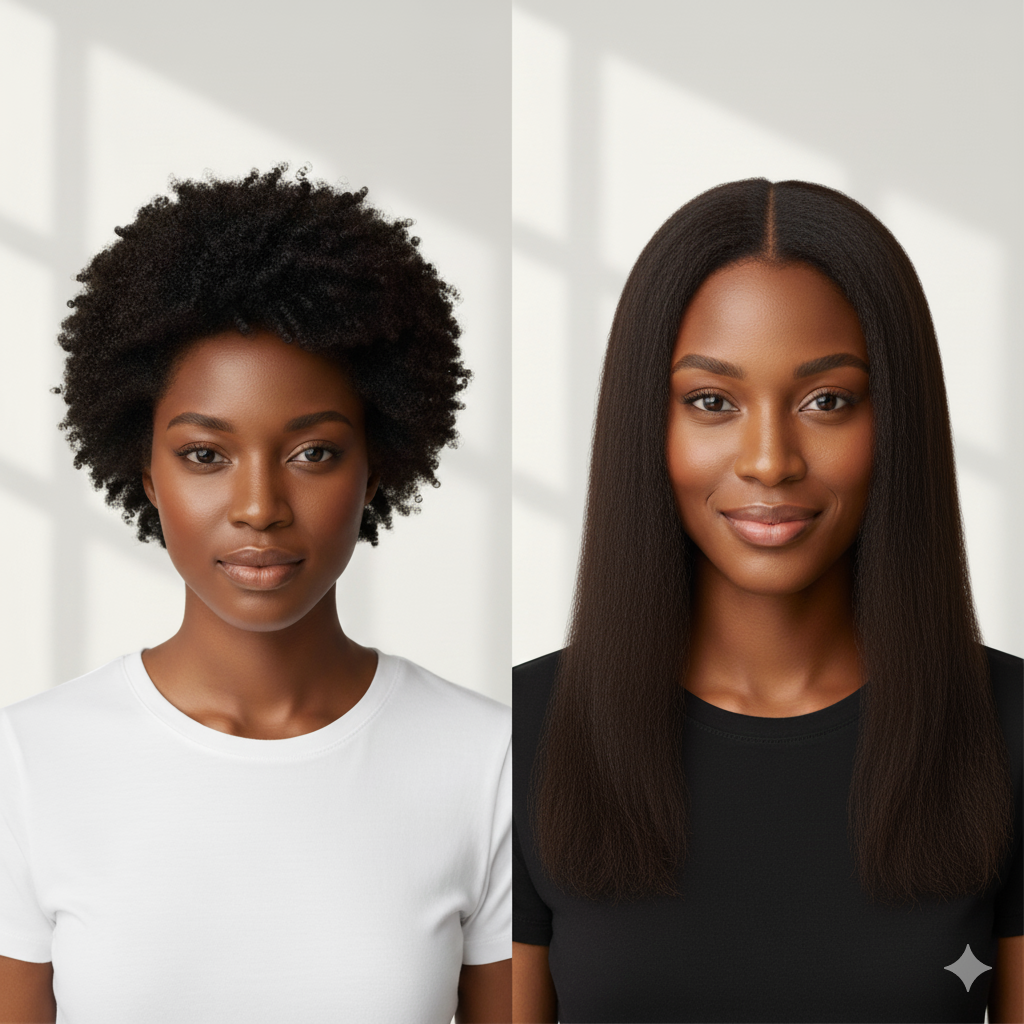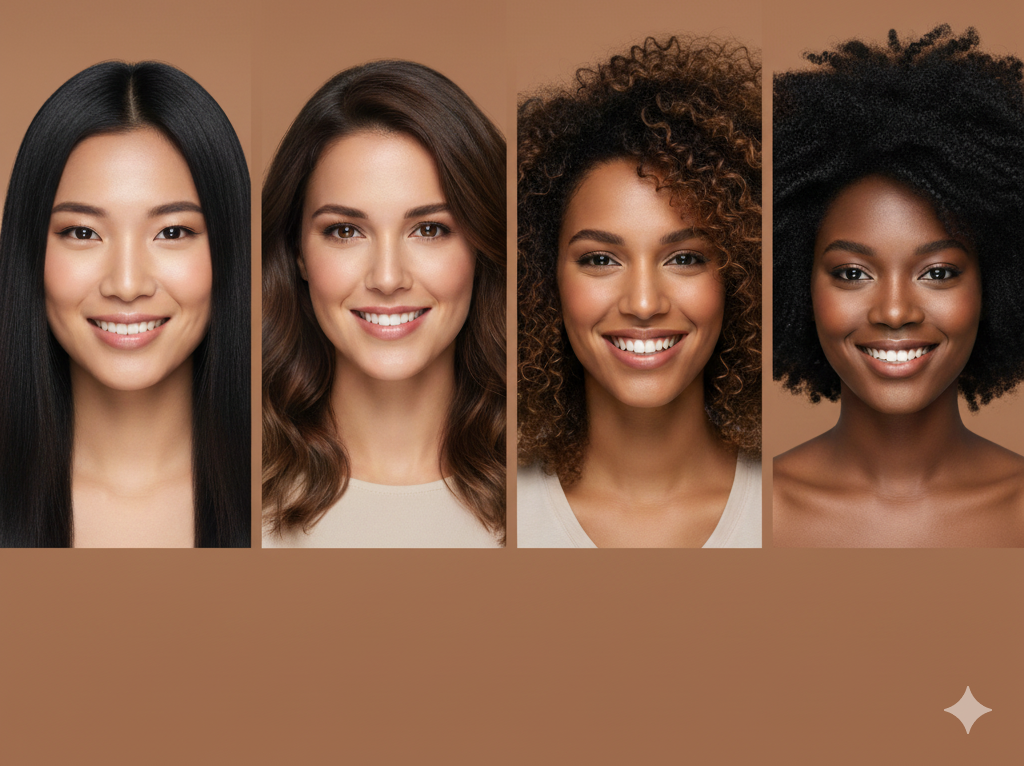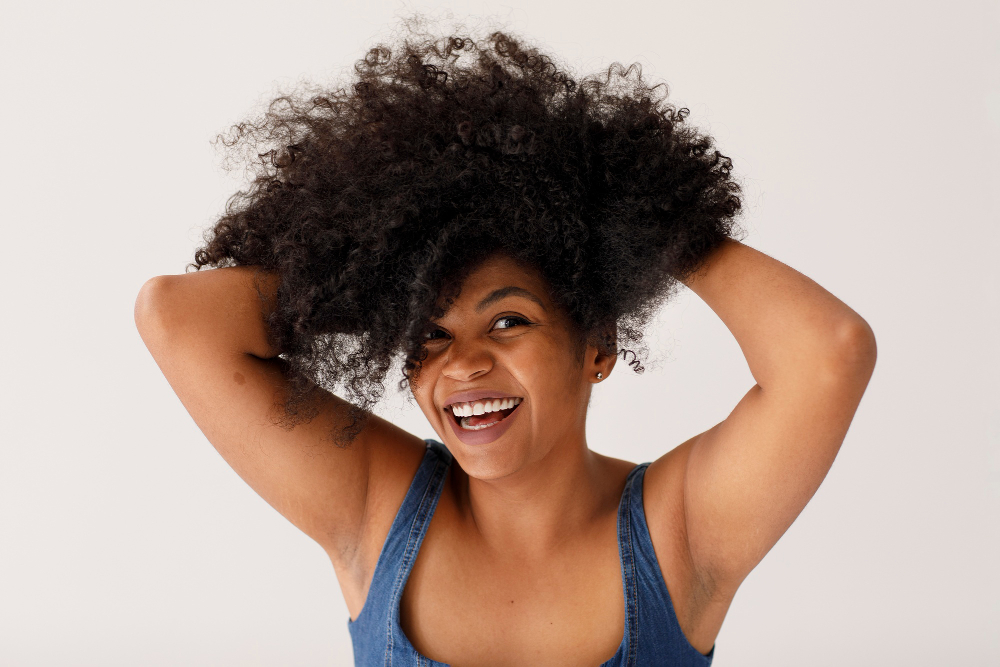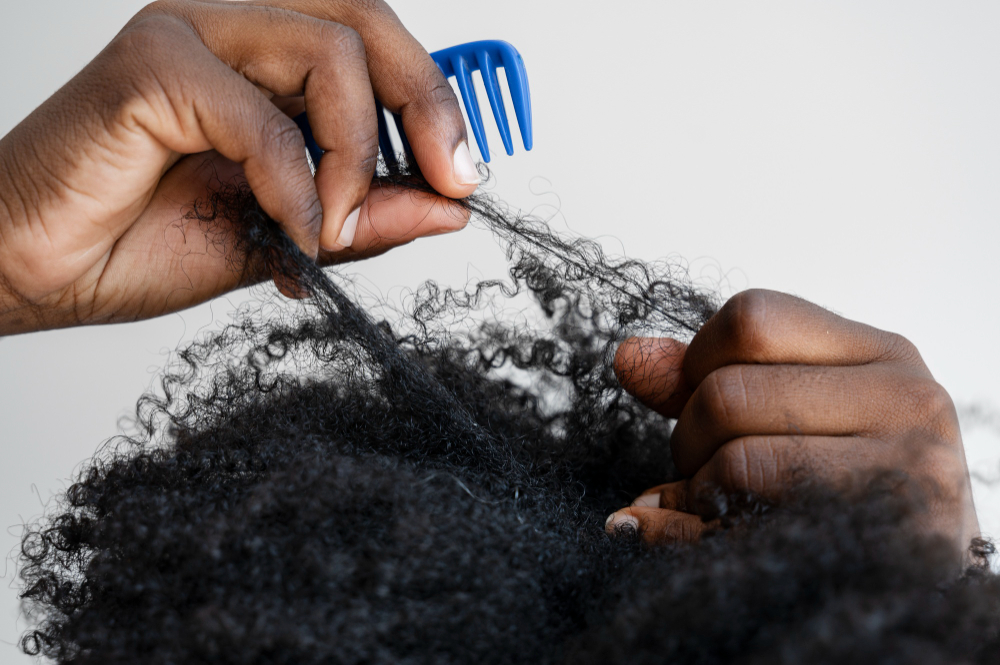Trending Article · 16 mins read
Transitioning to Natural Hair: All You Need to Know
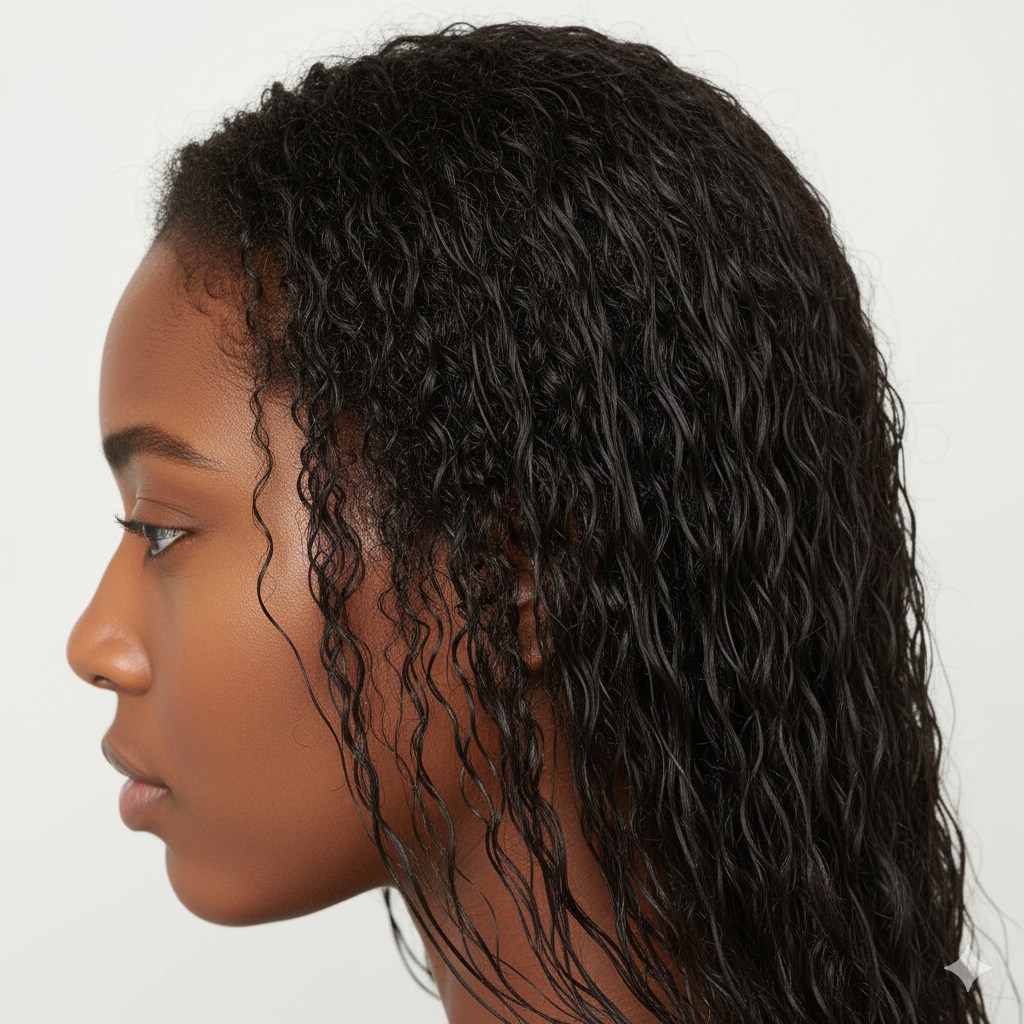
Transitioning to natural hair is one journey new naturals may embark on as they come into the natural hair space. But what does it mean to transition? What can you expect while transitioning to natural hair?
We'll talk about these and more in this article.
What Does Transitioning to Natural Hair Mean?
Transitioning to natural hair refers to gradually growing out your natural hair from the root while the ends of your hair are relaxed or chemically treated.
The point is to allow your hair with its natural curls to grow alongside the relaxed portion of your hair while you cut off the relaxed parts gradually until it's all gone and you have only your natural curls left.
It is the opposite of the big chop, where the relaxed ends are cut off at once, leaving only the natural parts. Read about the big chop.
Transitioning to natural hair can be a daunting journey, but it gets easier or manageable when you know what to expect. Let's find out some.
What to Expect When Transitioning to Natural Hair
1. A line of demarcation
The first thing you'd see is a line of demarcation.
Simply put, it's that point where your naturally growing curls or coils meet the relaxed, chemically treated hair strands. If your hair at the root is still very short, it might not be very visible, but once it's grown to a reasonable extent, it becomes obvious.
When your hair is wet, this line of demarcation might make your hair look like a part of it is healthy while the other is damaged. Unless your hair is actually damaged, there is nothing to worry about; it's the difference in textures that creates that impression.
2. Trimming appointments
Yes, transitioning to natural hair will require you to have regular trimming appointments.
The goal of these trimming appointments is not only to reduce the length of the relaxed hair gradually, but also to protect your upcoming natural hair from damage. How?
Split ends, unloosened tangles and knots can eventually snag and drag your natural hair, which could lead to breakage.
Ensure you keep your trimming appointments regularly. You can trim every 6-8 weeks or 8-10 weeks; the duration is dependent on your schedule and how fast you want to transition.
3. Dryness, lots of dryness
Type 4 hair is prone to dryness due to the structure of the hair strands. So, you might notice that your hair at the root might be drier than the ends, and it may look puffy. If you've noticed this, there's absolutely no need to panic; all you need is to study the cause and, most importantly, use the right products to manage this.
Do away with any shampoos or products that are sulphate-based; they are major culprits for drying out your hair and stripping it of its natural oils.
4. Gentle care
Natural hair requires tenderness when you handle it. This gentle care cuts across even the simple task of combing your hair.
First of no more coming from top to bottom, now, you go from the bottom(ends) to the root. Also, you need a wide-tooth comb for your hair now. No more tiny spaced combs that could easily pass through relaxed hair.
As you comb, you have to be gentle because you might think your hair is doing great, but meanwhile, it might just be pulling out from the roots or at the line of demarcation. Care and gentleness are non-negotiable when transitioning to natural hair.
5. No heat styling when transitioning to natural hair
This might raise a few eyebrows, because the use of heat on natural hair is pretty controversial.
There are the “oh never use heat” naturals and the “use medium to low heat” naturals, but that's not the point in this article. We'll state it plainly: during your transition process, using heat should be off the table. Here is why.
In your transition phase, you're growing out your natural hair, and you're not sure what your hair pattern is at that point. You also haven't learnt so much about this “fresh hair”, so if you start applying heat before it even grows out, you might just be setting yourself up for damaged hair.
6. Reduced styling options
Now, before you panic, this doesn't mean you can't make hairstyles that you like; it just means during the transition phase, you might have to play it safe.
Sticking with easy, protective hairstyles can help you deal with both hair textures and keep the line of demarcation from being noticeable.
Most importantly, at the point of transition, to reduce regret and the stress it can come with, it's best to keep the health of your hair as a priority. Plus, you can always play it safe with wigs, twist outs, braid outs or flexi rod sets.
7. You'll need a LOT of patience
When it comes to your hair, patience is a fixed quality. Hair grows about a quarter to half an inch every month. A transition can take as long as 6 months to a year to achieve a length you are comfortable with.
To keep going, especially on those difficult days, you'll need a lot of patience to hold on.
8. New products
Aside from shampoos and rinse-out conditioners, your product kit would contain moisturizing deep conditioners, oils, and masks. Don't be worried, it doesn't mean you have to empty your pockets to get these products.
You can make DIY conditioners, if that's your vibe or get affordable products that work perfectly for type 4 hair. Check out The HairTalk Shop.
With these points, you know what to expect as you transition from relaxed to natural hair. Let's talk about what you need to succeed in your journey
Tips for Transitioning to Natural Hair
1. Deep condition regularly
Deep conditioning your hair would set you off to a great start. A moisturizing deep conditioner will help the natural parts get the moisture they need and also make them manageable.
It will also preserve the relaxed parts, keeping them from drying out or lacking nutrients.
Use a conditioner that nourishes and moisturizes, providing both textures with what they need.
2. Take care of your scalp
The scalp is an important part of your hair growth; don't forget it. Keep your scalp clean, free from product buildup or scalp flakes; this way, your follicles are clean and your hair can grow.
3. Detangle gently
Don't be in a hurry to tear through knots and tangles; take your time to loosen them and detangle with care.
4. Moisture is your friend
Using either the LOC or LCO method, ensure you give your hair the moisture it needs. A moisturized hair is easier to manage and frankly, thrives better.
5. Protective styling for best results
Bantu knots, flat twists, two-strand twists, cornrows, etc. As long as they are tight and pulling on your scalp, enjoy them.
6. Thrive on the power of community
Sometimes the key to keep going on a journey is when you have supporters and cheerleaders. Surround yourself with ladies who are on the same journey with you, or at least who support your decision; this power of a circle will be your boost on those tired days.
Join our community of supportive ladies to cheer you on your journey. Join The HairTalk community.
Frequently Asked Questions
1. Do I need to know my hair porosity while transitioning to natural hair?
You can learn about your hair porosity while you transition.
But, it's not exactly a need, that is because your head of hair isn't fully natural, so you might get some disparity. Additionally, the porosity of your unrelaxed hair would be different from the relaxed one because relaxing hair changes its porosity. Your relaxed hair can be high porosity because of the damage to the cuticle by the relaxer.
Knowing your hair porosity can guide you in getting the right products and using them, but if you decide to wait until you've fully transitioned to determine your porosity, that's also fine.
2. Can I big chop along my transition journey?
Yes. If at any point you decide to take a plunge and do a big chop, that is absolutely fine. We’ll recommend learning about the big chop as well before you decide.
Wrapping up
Transitioning to natural hair can be an interesting journey, challenging, yes, but the reward is a healthy head of hair that you rock as your natural crown.
Feature image credits:


